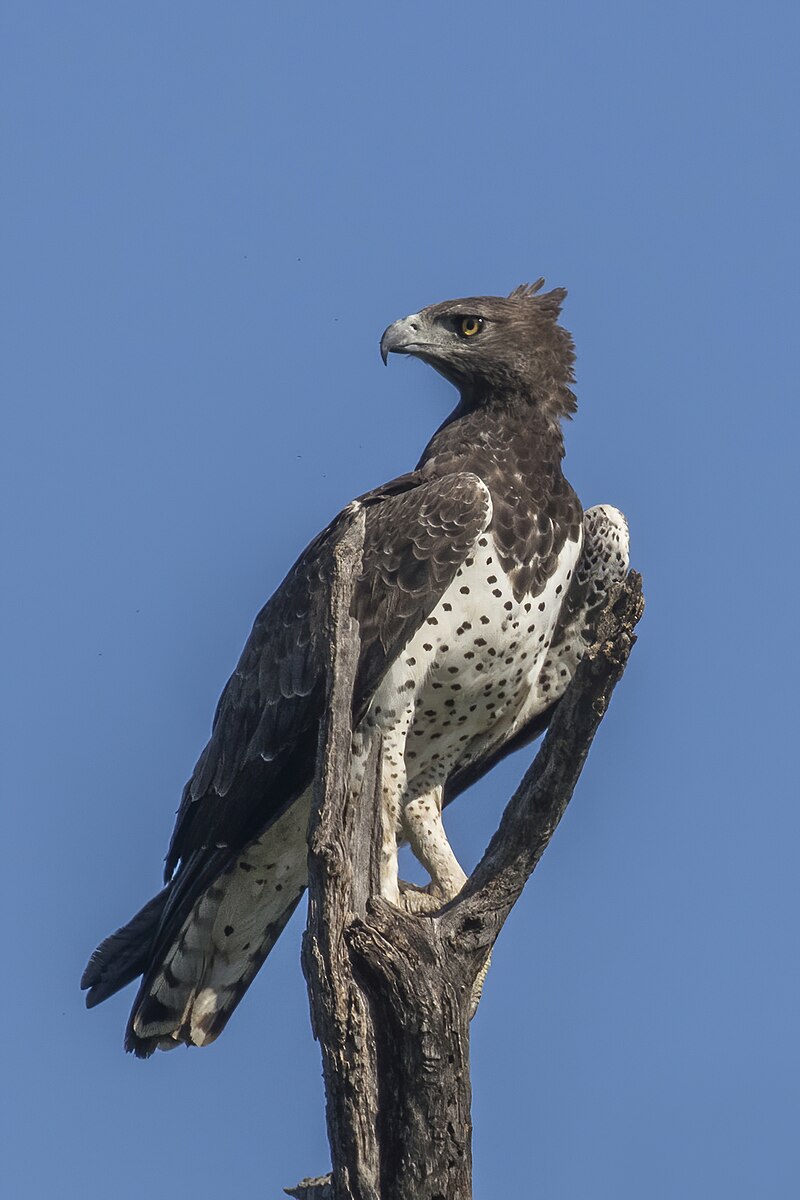The Martial Eagle (Polemaetus bellicosus) is the largest eagle in Africa, known for its powerful hunting abilities and diverse diet. As an apex predator, this majestic bird of prey plays a crucial role in the ecosystem, preying on a wide range of species, from small mammals to large reptiles.
The Martial Eagle’s Prey Spectrum
The Martial Eagle’s diet is remarkably diverse, encompassing a variety of prey species. According to a study conducted in the Maasai Mara region of Kenya, the Martial Eagle’s diet comprises 26 different prey species, with the following being the most prominent:
- Hares (two Lepus species) – 17.3%
- Impala fawns (Aepyceros melampus) – 13.6%
- Helmeted guineafowl (Numida meleagris) – 12%
In addition to these primary prey items, Martial Eagles have been observed hunting and consuming:
- Reptiles, such as monitor lizards and venomous snakes
- Other birds of prey, including the lanner falcon (Falco biarmicus), peregrine falcon (Falco peregrinus), and spotted eagle owl (Bubo africanus)
- Prey stolen from other predators, such as leopards, cheetahs, and bearded vultures
Hunting Strategies and Techniques
 Image source: Martial eagle by Charles J. Sharp
Image source: Martial eagle by Charles J. Sharp
The Martial Eagle is a skilled and opportunistic hunter, employing a variety of hunting strategies to capture its prey. Its primary hunting technique involves soaring at great heights and diving at high speeds onto unsuspecting targets. This powerful dive allows the Martial Eagle to strike with immense force, often killing its prey instantly.
Sexual Dimorphism and Dietary Preferences
Interestingly, the Martial Eagle exhibits sexual dimorphism, with females typically selecting heavier prey items compared to their male counterparts. This difference in prey selection is likely due to the larger size and greater physical capabilities of female Martial Eagles.
Threats to the Martial Eagle Population
Despite their impressive hunting abilities, Martial Eagle populations are facing various threats that have led to a decline in their numbers. These threats include:
- Hunting: Martial Eagles are sometimes targeted by humans for their feathers or perceived as a threat to livestock.
- Habitat loss: Deforestation and habitat destruction have reduced the available hunting grounds for Martial Eagles.
- Powerline collisions: Collisions with powerlines and other infrastructure can result in injury or death for these birds.
- Slow reproduction rate: Martial Eagles have a low reproductive rate, making it challenging for their populations to recover from declines.
Conclusion
The Martial Eagle’s diverse diet and hunting prowess make it a fascinating subject of study. As an apex predator, this majestic bird plays a crucial role in the delicate balance of the African ecosystem. However, the threats facing Martial Eagle populations highlight the importance of conservation efforts to ensure the long-term survival of this iconic species.
References:

